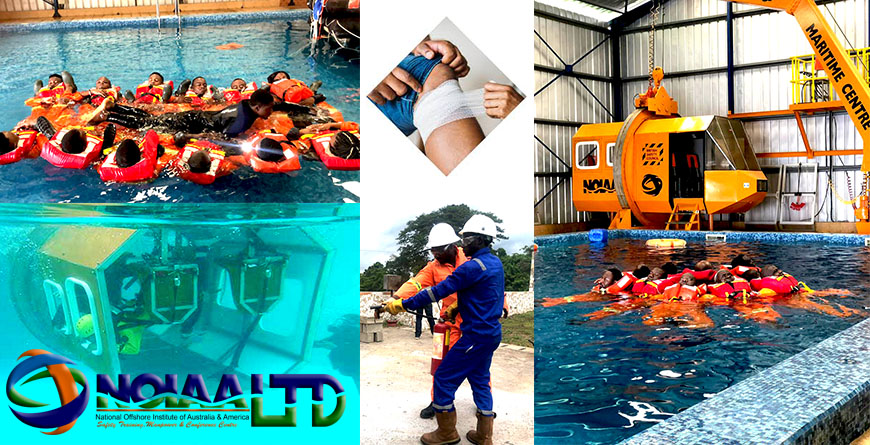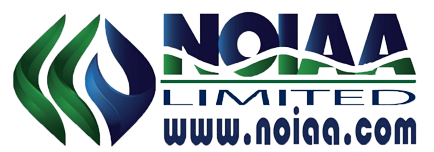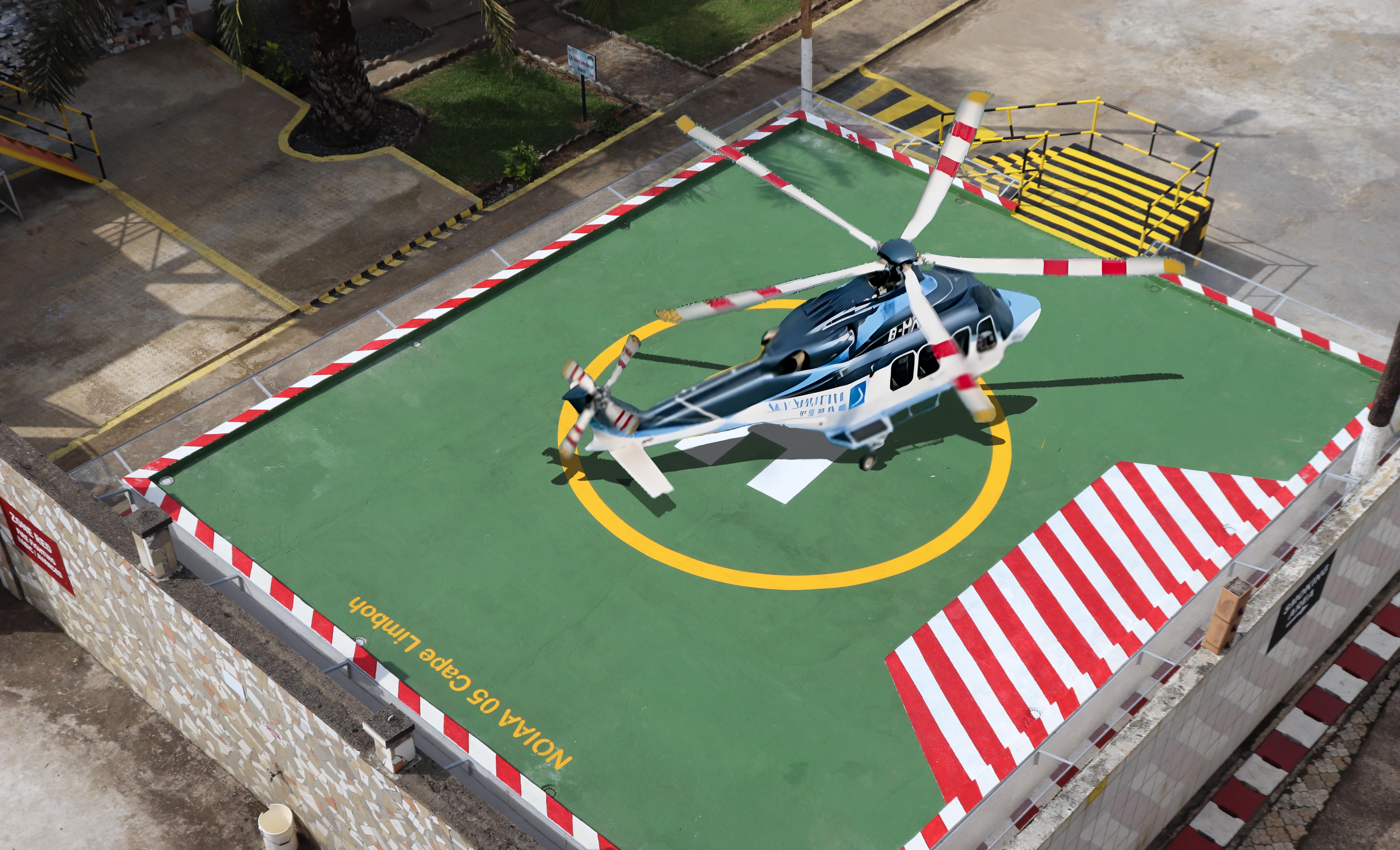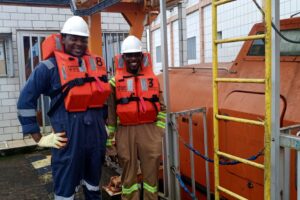BOSIET: Keeping your head above water
- Categories Africa On/offshore Safety News, Offshore Safety Training, Onshore Safety Training
- Date 24 July 2019
- Comments 0 comment

To drive a car you need a driver’s license. And even if you always hope that everything will be OK, you need to be prepared for an emergency: With practical first-aid knowledge and a well stocked first-aid kit in the trunk. Better safe than sorry.
In the BOSIET (Basic Offshore Safety, Induction & Emergency Training), they learn how to free themselves from a damaged, rotating chopper underwater – or how to evacuate from a platform via an emergency slide, extinguish a fire and provide first aid. Even though we assume that they will never need to apply these skills. After all, better safe than sorry.
Face-to-face with possible danger
If you hold a driver’s license that means you have completed at least one first-aid training session in your life. But, hand on heart: How likely is it that you could apply this knowledge in an emergency? This is precisely what the BOSIET training is designed for: It makes you experience the possible hazards of an offshore oil platform as realistically as possible so that the participants lose their fear of the unknown and can automatically apply their skills if the worst comes to the worst – whether it’s a helicopter crash, a blind leap from a pitch-black building, resuscitating someone who’s had an accident, jumping off the platform into an icy ocean or surviving on a life raft.
“On a training like this, you get personal experience and practice in what to do if there’s ever a real emergency.”
(CHRIS C. YOK, PCEO of NOIAA CORP)
The BOSIET at NOIAA LTD consist of the following training contents:
Safety inductions:
Offshore hazards, their control and consequences. Waste disposal/environmental awareness. How offshore safety is regulated. How offshore safety is managed. Procedures for prescribed medicines. Alcohol and substance abuse policy. PPE requirements. Procedures for reporting incidents, accidents and near misses. Role of the Medic.
Helicopter safety & escape:
Pre boarding. Safe boarding. In flight safety. Safe disembarkation. In flight emergency actions. Use of Emergency Breathing System equipment. Practical Emergency escape Breathing System training. Practical emergency ditching and escape training.
Sea survival:
Abandonment theory and practical sea survival training. Actions for mustering and boarding of a survival craft, and actions as a passenger during launching operations. Use of helicopter rescue strops, and winching procedures. Emergency First Aid including CPR.
Firefighting and self rescue:
Nature and causes of fire. Fixed systems and response. Use of hand held extinguishers. Operation of fixed hose reels. Self rescue techniques in reduced visibility and completely obscured visibility. Use of escape hoods.


![IMG_20241023_165727_734[1] IMG_20241023_165727_734[1]](https://training.noiaa.com/wp-content/uploads/2024/11/IMG_20241023_165727_7341-scaled-300x200.jpg)
